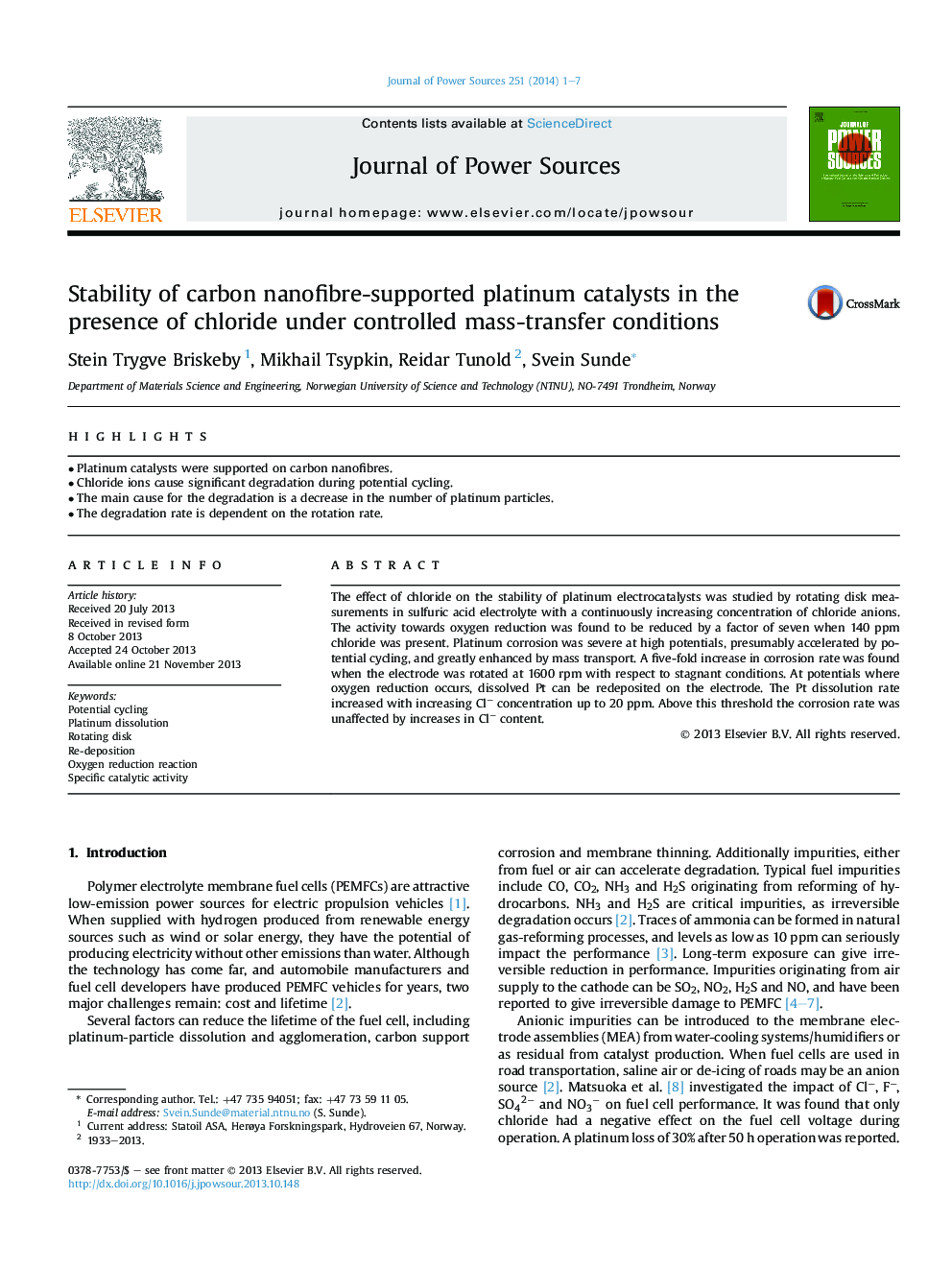| Article ID | Journal | Published Year | Pages | File Type |
|---|---|---|---|---|
| 7737580 | Journal of Power Sources | 2014 | 7 Pages |
Abstract
The effect of chloride on the stability of platinum electrocatalysts was studied by rotating disk measurements in sulfuric acid electrolyte with a continuously increasing concentration of chloride anions. The activity towards oxygen reduction was found to be reduced by a factor of seven when 140Â ppm chloride was present. Platinum corrosion was severe at high potentials, presumably accelerated by potential cycling, and greatly enhanced by mass transport. A five-fold increase in corrosion rate was found when the electrode was rotated at 1600Â rpm with respect to stagnant conditions. At potentials where oxygen reduction occurs, dissolved Pt can be redeposited on the electrode. The Pt dissolution rate increased with increasing Clâ concentration up to 20Â ppm. Above this threshold the corrosion rate was unaffected by increases in Clâ content.
Keywords
Related Topics
Physical Sciences and Engineering
Chemistry
Electrochemistry
Authors
Stein Trygve Briskeby, Mikhail Tsypkin, Reidar Tunold, Svein Sunde,
